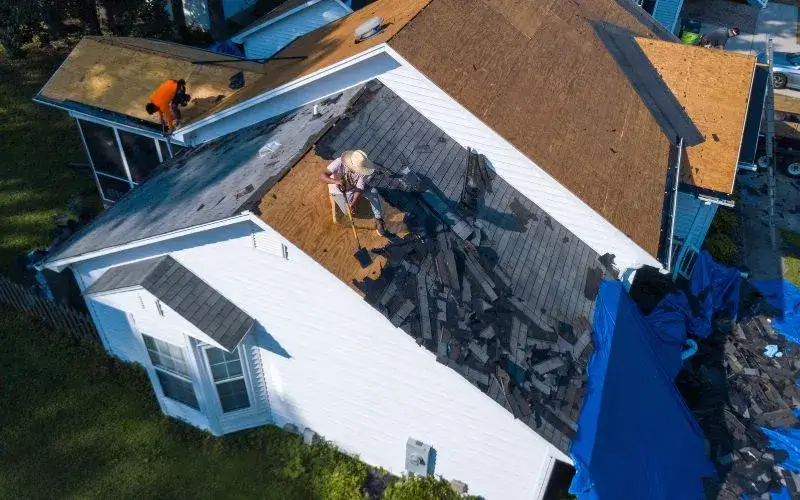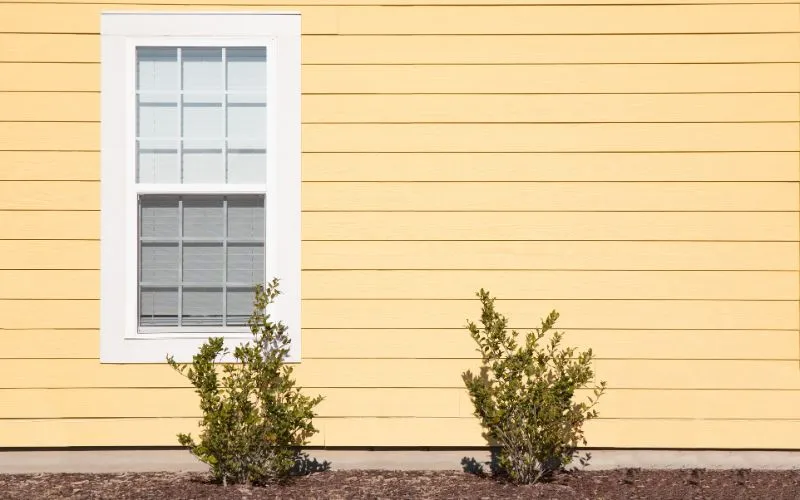What Does Hail Damage on a Roof Look Like?

Spotting hail damage on a roof early is a great way to prevent further damage to your home and help you save money. Whether your home just went through a severe hail storm or you're just wondering what hail damage looks like, we'll be going over types of hail damage along with more important topics.
After reading this article, you'll learn about the different types of roof hail damage per roofing material, the factors that influence the severity of hail damage, and what to do if you have hail damage on your roof.

Factors Influencing Hail Damage Severity
The severity of hail damage varies based on several factors, as mentioned below:
Size & Density of Hail
The size of a hailstone has a huge correlation with the severity of the hail damage since larger hail has more momentum, resulting in greater impact force. As for hail density, if it's higher than usual, then you can expect to find multiple hail impacts in the same area of a roof.
Exterior Materials
Your roof material also determines how likely your roof is to have hail damage. For example, asphalt roofs are more likely to get hail damage compared to metal roofs, which are known for their hail damage resistance.
Barriers
Do you have trees around your home? Well, believe it or not, trees can provide a degree of protection against hail damage since they can shield your roof. In addition, nearby structures or buildings can also provide a degree of protection against hail if high enough.
Wind Direction & Speed
When roofers go out to inspect for hail damage, one of the first things we like to determine is the direction from which the wind came when the hail storm occurred. Wind direction allows you to see what elevation of the roof will contain the most hail damage. Wind speed is also a big factor in determining the severity of hail damage since it increases hailstones' velocity and impact angle.

What Does Roof Hail Damage Look Like?
The look of hail damage can vary depending on the roof's material. For example, hail damage on an asphalt shingle will look much different than hail damage on a wood shingle.
Asphalt Roof Hail Damage
- Loss of Granules: After a hailstone impacts your roof, it can dislodge the granules, creating granular loss. Over time, areas with granule loss will begin getting exposed to UV rays and begin to age.
- Dents: Hailstones can cause dents or bruises to asphalt shingles. If you put your finger over the dent on your asphalt roof, it'll feel soft to the touch, and over time, these dents will begin to crack due to weakening, which, as a result, can expose your home to water damage.
- Cracks or Tears: As mentioned previously, hail damage can begin as a simple dent to your asphalt roof and eventually crack your shingle. Also, if the hail damage is severe enough, it can instantly crack an asphalt shingle.
Wood Shingles Hail Damage
- Splits & Cracks: Hail impacts can cause cedar to split or crack, usually around the edges or the grain.
- Impact Marks: You may also notice circular or irregular depressions on the wood from hailstones. These areas tend to be very vulnerable and should be addressed.
- Missing or Broken Shingles: If the hailstorm is severe enough, it can dislodge the wood shingles off the roof or break them, leaving exposed areas of your cedar roof that require immediate attention to avoid water damage.
Metal Roof Hail Damage
- Dings: You may find dings from hailstones on your metal roof. While a ding on a metal roof from hail won't affect its functionality, it can drop your curb appeal in half if it is bad enough.
- Scratches: If the hailstones are sharp, they can leave scratches on a metal roof, which can impact the protective coatings that metal roofs come with. Over time, the risk of corrosion can increase if the metal roof coatings are affected.
- Punctures: You'll rarely find a puncture on a metal roof from hail damage, but if the hail storm is severe enough, it's possible to find punctures on a metal roof from hail.

Addressing Hail Damage on Your Roof
While finding hail damage on your roof isn't the ideal thing to happen in your day, you definitely don't want to put it off.
Action Steps
1. Safety First: After a hailstorm, prioritize your safety. Avoid walking on your roof to inspect for damage, as it can be slippery and steep.
2. Document Damage: If possible, document the roof hail damage from the ground and any other hail damage around your home, such as gutters and siding. This documentation will be helpful when filing a roof claim with your insurance.
3. Contact Your Insurance: It's important to contact your homeowners insurance to notify them of the roof hail damage. They'll guide you through the claims process and send out an adjuster to inspect your roof and determine the extent of damage. You can also opt to contact a roofing company during this process.
4. Schedule A Professional Inspection: Even if you don't think the hail damage is that bad, it's important to contact a pro roofer who can have a second look. Oftentimes, professional roofers will find additional hidden hail damage that you can provide to your insurance.
5. Review the Insurance Adjuster's Report: Take a look at the report that is provided to you by your insurance company and make sure everything was accurately documented and accounted for. If you have any concerns, contact your insurance.

Get Roof Storm Damage Assistance In Illinois
If you have a roof leak or any sort of roof damage from a recent storm in the Chicagoland area, contact your friends over at Global Exterior Experts. We'll provide you with an accurate roofing estimate along with the best next steps for your unique situation, whether it's a roof repair or roof replacement. Plus, you'll receive guidance on how to navigate your insurance claim in Illinois.





.webp)


